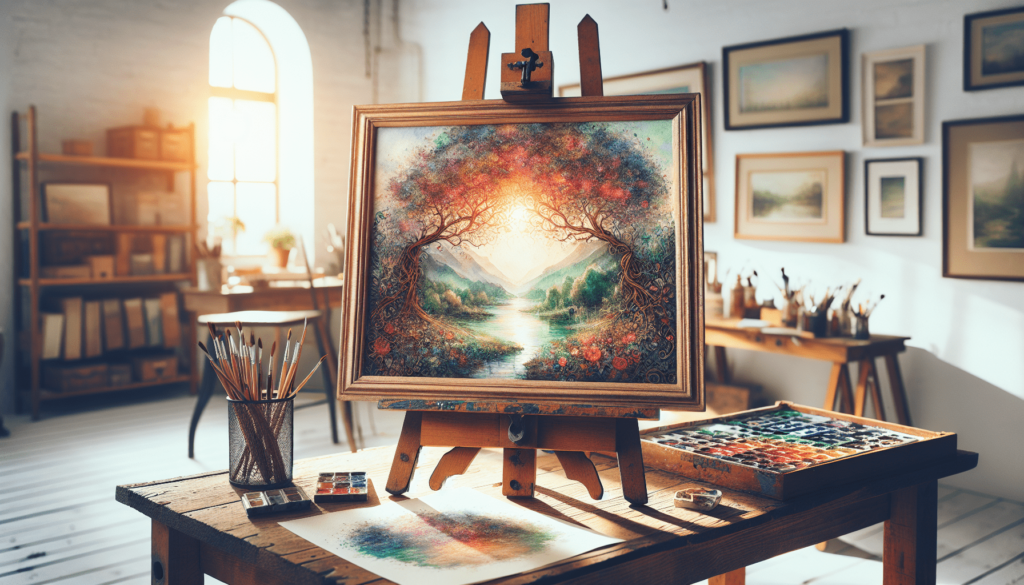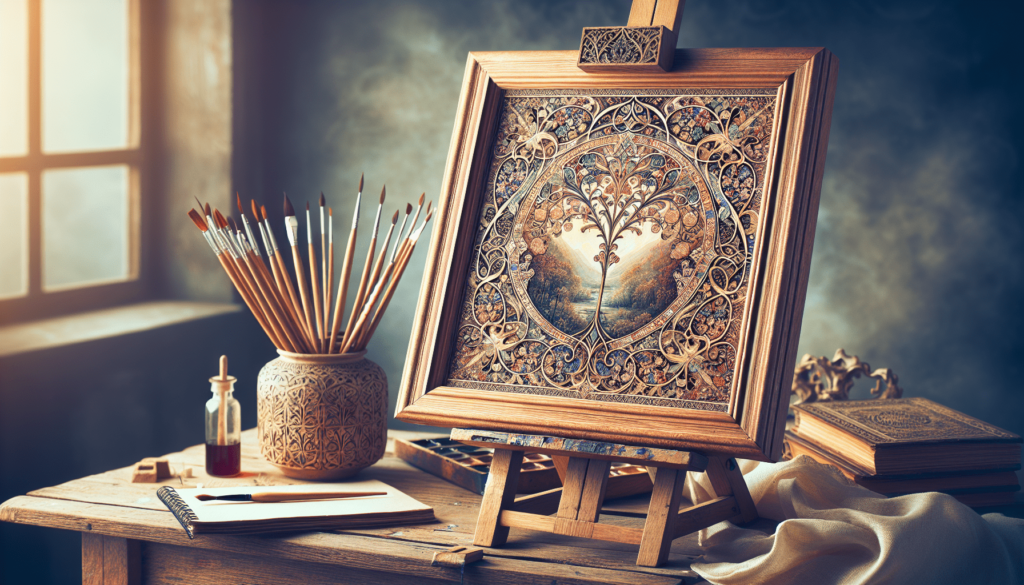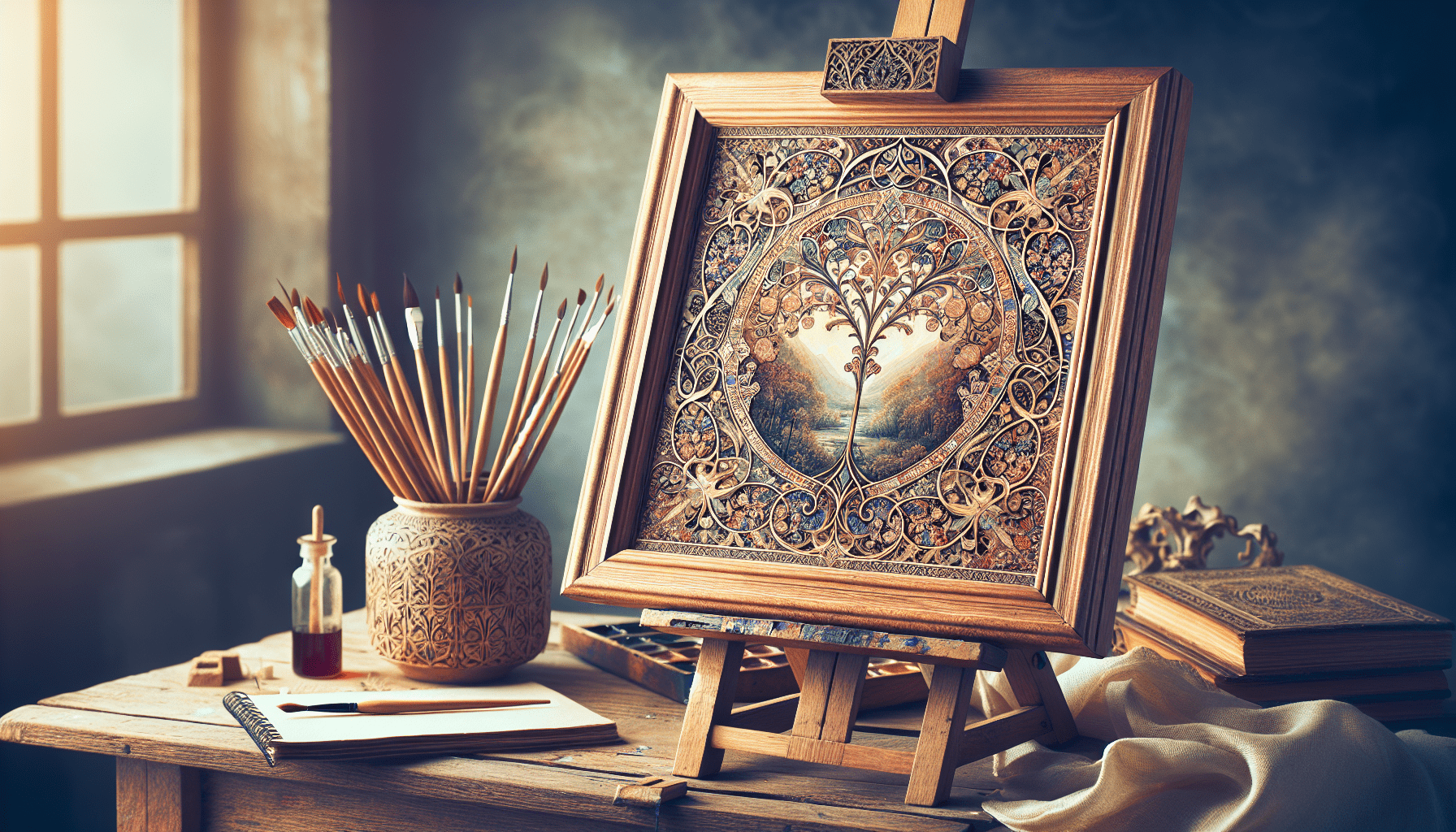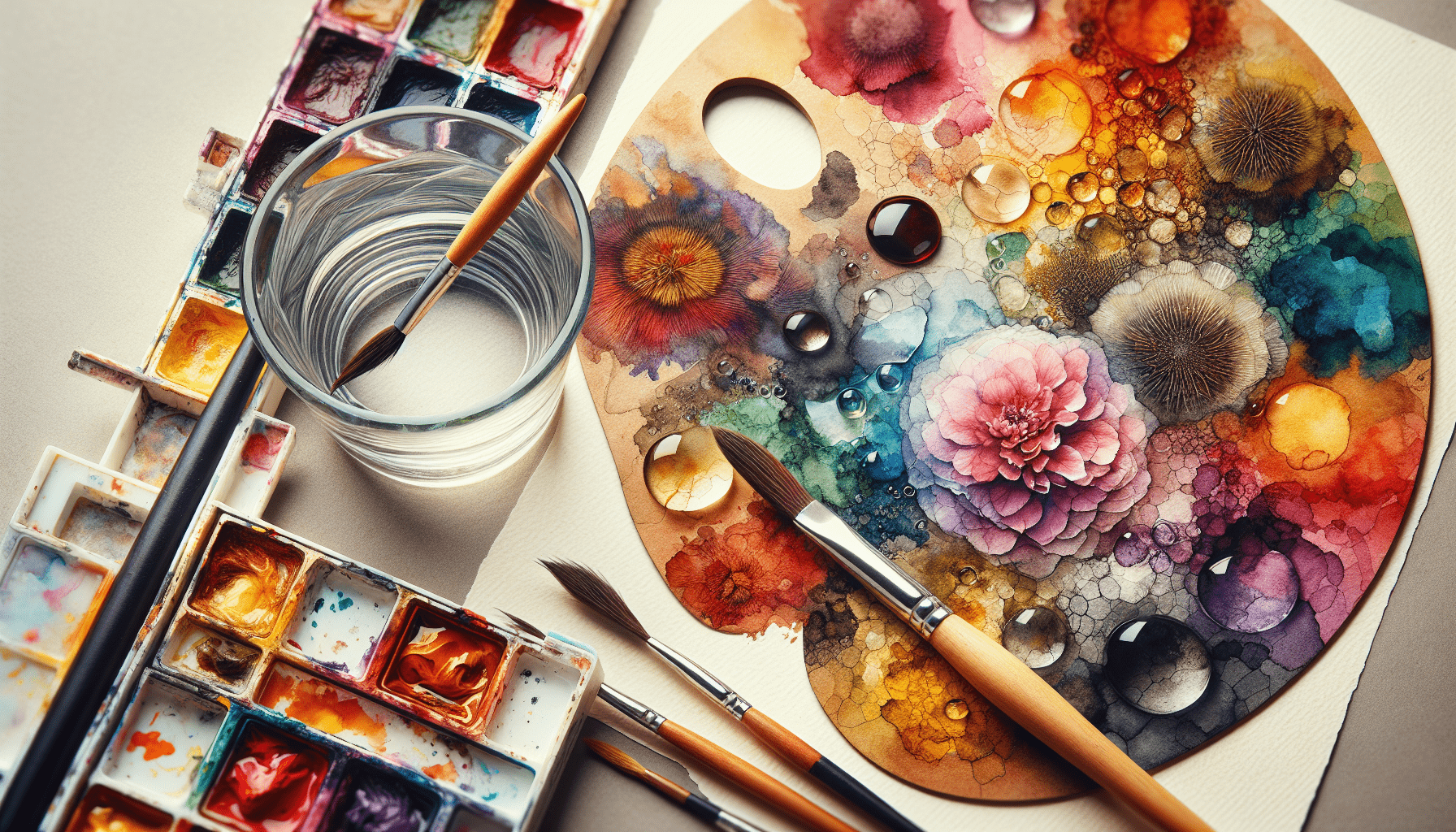How To Preserve Watercolor Painting” provides a comprehensive guide to ensuring the longevity and vibrancy of your watercolor artworks. In this article, you will learn specialized techniques and best practices for protecting your watercolor paintings from environmental damage and deterioration. Proper preservation methods, such as controlled lighting, temperature, and humidity, will be covered in detail to help you maintain the integrity of your artwork. Additionally, you will be introduced to different types of framing and storage solutions that can safeguard your paintings for years to come. Have you ever wondered how to preserve your delicate watercolor paintings, ensuring that they remain in pristine condition for years to come? Watercolor paintings, with their luminous washes and delicate tones, are susceptible to a range of environmental factors and aging processes that can diminish their beauty over time. Therefore, proper handling, display, and storage are crucial in preserving these works of art. This comprehensive guide will provide you with detailed information on how to preserve watercolor paintings effectively.

Understanding Watercolor Paintings
What Makes Watercolor Paintings Unique?
Watercolor paintings stand out due to their transparency and the vibrant yet delicate hues achieved through water-soluble pigments. These qualities, while visually captivating, also contribute to their fragility. Unlike oils or acrylics, watercolors are not protected by a thick layer of paint, making them more susceptible to external elements such as light, moisture, and contaminants.
The Vulnerability of Watercolor Paintings
Because of the nature of the medium, watercolor paintings are particularly vulnerable to various environmental and physical factors. These include:
- Light Exposure: Ultraviolet (UV) light can cause fading and discoloration.
- Humidity and Moisture: These can lead to mold growth and paper warping.
- Temperature Fluctuations: Extreme temperatures can result in brittleness and cracking.
- Contaminants: Dust, airborne pollutants, and acids can cause deterioration.
Handling Watercolor Paintings
Proper Techniques for Handling
When handling watercolor paintings, it is essential to take specific precautions to avoid causing damage. Follow these steps to ensure safe handling:
- Use Clean Hands or Gloves: Oils and dirt from your skin can transfer to the artwork, so always handle with clean, dry hands or cotton gloves.
- Support the Artwork: When moving a watercolor painting, support it from underneath to prevent bending or creasing. Use a stiff backing board if necessary.
- Avoid Touching the Surface: Never touch the painted surface directly, as this can smudge or lift the pigment.
Transporting Watercolor Paintings
Transporting watercolor paintings requires additional care to protect them from potential damage. Here’s how to do it safely:
- Use Protective Coverings: Place the painting between acid-free tissue paper and a rigid, supportive backing board. For added protection, use a plastic sleeve.
- Secure Packaging: If using a box, ensure the painting fits snugly to prevent movement. Fill any gaps with bubble wrap or foam padding.
- Climate Control: Maintain a stable environment during transit, avoiding extreme temperatures and high humidity.
Displaying Watercolor Paintings
Choosing the Right Location
The location where you display your watercolor painting is key to its preservation. Consider the following guidelines:
- Avoid Direct Sunlight: UV light can cause pigments to fade. Choose a location away from windows or use UV-filtering glazing if necessary.
- Stable Environment: Ensure that the display area has stable temperature and humidity levels. Avoid placing near radiators, air conditioning vents, or bathrooms.
- Low Traffic Areas: Display the painting where it is less likely to be touched or knocked.
Framing and Glazing
Framing is not just about aesthetics; it is also a vital step in preserving your painting. Here’s what to keep in mind:
- Use Acid-Free Materials: Select acid-free matting and backing to prevent paper degradation.
- Select UV-Filtering Glazing: Use glass or acrylic glazing with UV protection to shield the painting from harmful light.
- Proper Mounting: Ensure the painting is securely mounted, but not tightly pressed, to avoid warping. Hinged mounting with archival tape is recommended.
Storing Watercolor Paintings
Ideal Storage Conditions
Proper storage conditions are essential to prevent deterioration while the artwork is not on display. Follow these storage guidelines:
- Cool, Dry Environment: Store paintings in a space with a stable, cool temperature (between 60-70°F) and low humidity (around 50%).
- Avoid Basements and Attics: These areas often experience temperature and humidity fluctuations, along with potential for water damage.
- Use Shelving: Store paintings flat in shelving units with solid, flat surfaces. Ensure shelves are made of archival, non-acidic materials.
Archival Storage Materials
Choosing the right storage materials can greatly enhance the longevity of your watercolor paintings. Here are some recommended materials:
- Acid-Free Boxes: Store smaller paintings in acid-free boxes that fit the artwork’s dimensions to minimize movement.
- Portfolio Binders: For flat storage, portfolio binders with acid-free sleeves are a good option for both protection and accessibility.
- Interleaving Sheets: Use acid-free interleaving sheets between paintings to prevent them from sticking together and to protect their surfaces.

Maintenance and Cleaning
Regular Maintenance Checks
Regularly inspecting your watercolor paintings can help you catch and address potential issues before they cause significant damage. Here’s how to conduct effective maintenance checks:
- Visual Inspection: Look for signs of fading, discoloration, mold, or insect activity. Pay attention to changes in the painting’s structure, such as warping or cracking.
- Check the Frame and Glass: Ensure the frame is still secure and that the glass is intact without any scratches or chips.
Cleaning Techniques
Cleaning a watercolor painting must be done with great care due to its delicate nature. If professional cleaning is needed, it is highly recommended to consult a conservator. For general care, follow these steps:
- Dusting: Use a soft, dry brush to gently dust the surface. Avoid using any moisture or cleaning agents.
- Frame Cleaning: Clean the frame with a soft cloth, but ensure no cleaning solutions touch the painting itself.
Addressing Damage
Identifying Common Types of Damage
Recognizing the type of damage is the first step in addressing it. Common issues include:
- Fading: Color pigments may lighten due to UV exposure.
- Stains and Mold: Often caused by high humidity or water exposure.
- Tears and Creases: Physical damage from improper handling or storage.
- Warps: Paper may warp due to changes in environmental conditions.
Professional Restoration
If your watercolor painting has sustained damage, professional restoration may be necessary. Here are the steps typically involved in the restoration process:
- Assessment: A conservator will evaluate the extent of the damage and determine the appropriate restoration methods.
- Cleaning: Carefully remove surface dirt and contaminants without compromising the paint.
- Repair: Tears or holes may be mended using compatible materials and techniques that blend seamlessly with the original work.
- Deacidification: Treating the paper to neutralize acids that can cause decay over time.
Preventative Measures for Long-Term Preservation
Using Archival Materials
One of the best ways to ensure the long-term preservation of your watercolor paintings is by using archival-quality materials throughout the handling, displaying, and storing processes. This minimizes the risk of acidic contamination and deterioration.
Controlled Environment
Maintaining a controlled environment is critical in preserving watercolor paintings. Invest in tools such as hygrometers and thermostats to monitor humidity and temperature levels. Additionally, consider using air purifiers to reduce the presence of airborne pollutants and contaminants.
Regular Re-Evaluation
Periodically re-evaluate the display and storage conditions of your watercolor paintings. What works well today might need adjustments in the future due to changes in the environment or the painting’s condition. Regular reassessments ensure that the preservation methods you are using remain effective.
Educational Efforts
Staying Informed
Preservation techniques and recommendations can evolve over time. Stay informed by referring to resources provided by art conservation organizations, museums, and professionals. Attend workshops and seminars if possible to keep up to date with the latest methods and materials for preserving watercolor paintings.
Educate Others
If you are an artist or have a collection of watercolor paintings, educate those around you—family, friends, or staff members—about the importance of proper care. This ensures they will support your efforts and handle the paintings correctly when necessary.
Record-Keeping
Maintaining detailed records about each painting can be immensely helpful in their long-term preservation. Note down the artist’s name, the year of creation, any restoration work done, and condition reports from past inspections. This information can be valuable for future conservators and for insurance purposes.
Conclusion: Preserving Watercolor Paintings for Future Generations
Preserving watercolor paintings involves a comprehensive strategy that encompasses careful handling, optimal display and storage conditions, routine maintenance, and professional restoration when necessary. By understanding the unique vulnerabilities of watercolor paintings and taking proactive steps to mitigate these risks, you can ensure that your artworks remain beautiful and cherished for many years to come. The investment in time and resources to maintain these delicate masterpieces is well worth it, allowing future generations to enjoy their artistic and cultural significance.
Remember, the key to preservation is consistency and vigilance. Regularly assess your methods and conditions, stay informed on best practices, and create an environment—both physical and educational—that supports the longevity of your watercolor paintings. Your dedication will not only preserve the artwork but also honor the creativity and skill of the artists who crafted these masterpieces.



